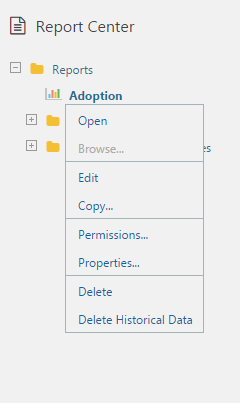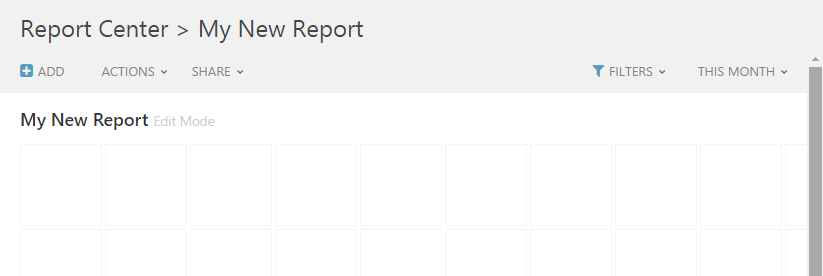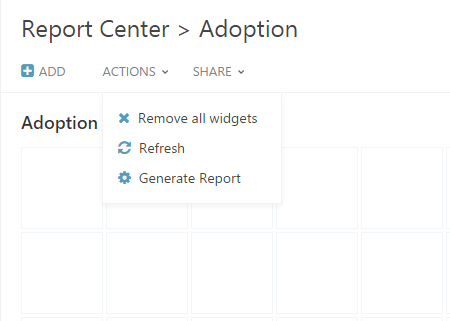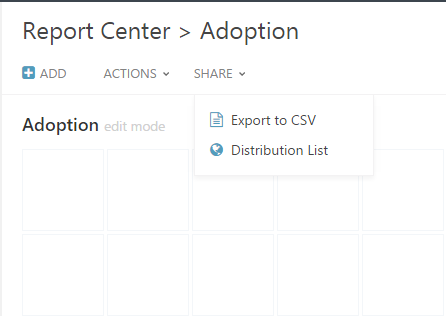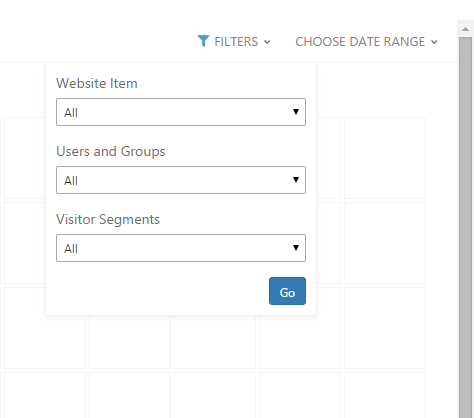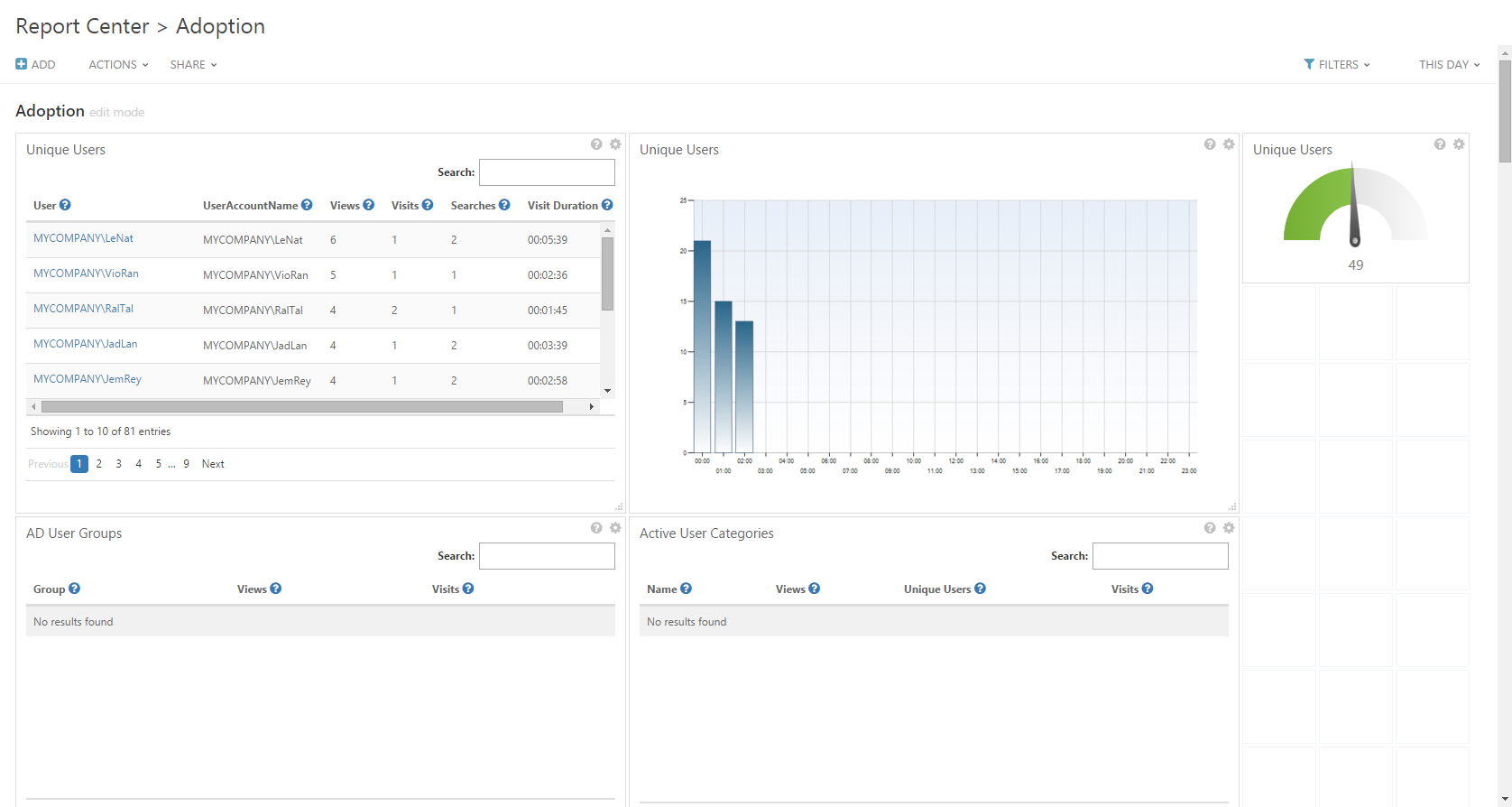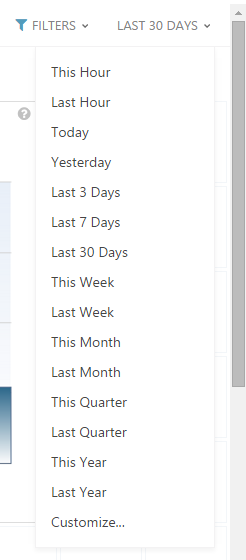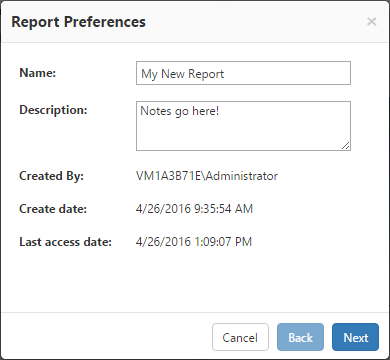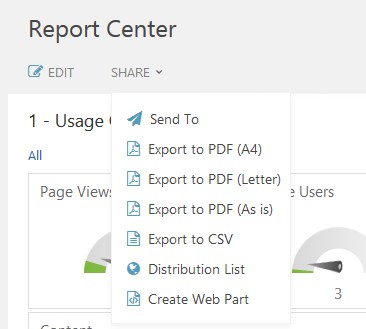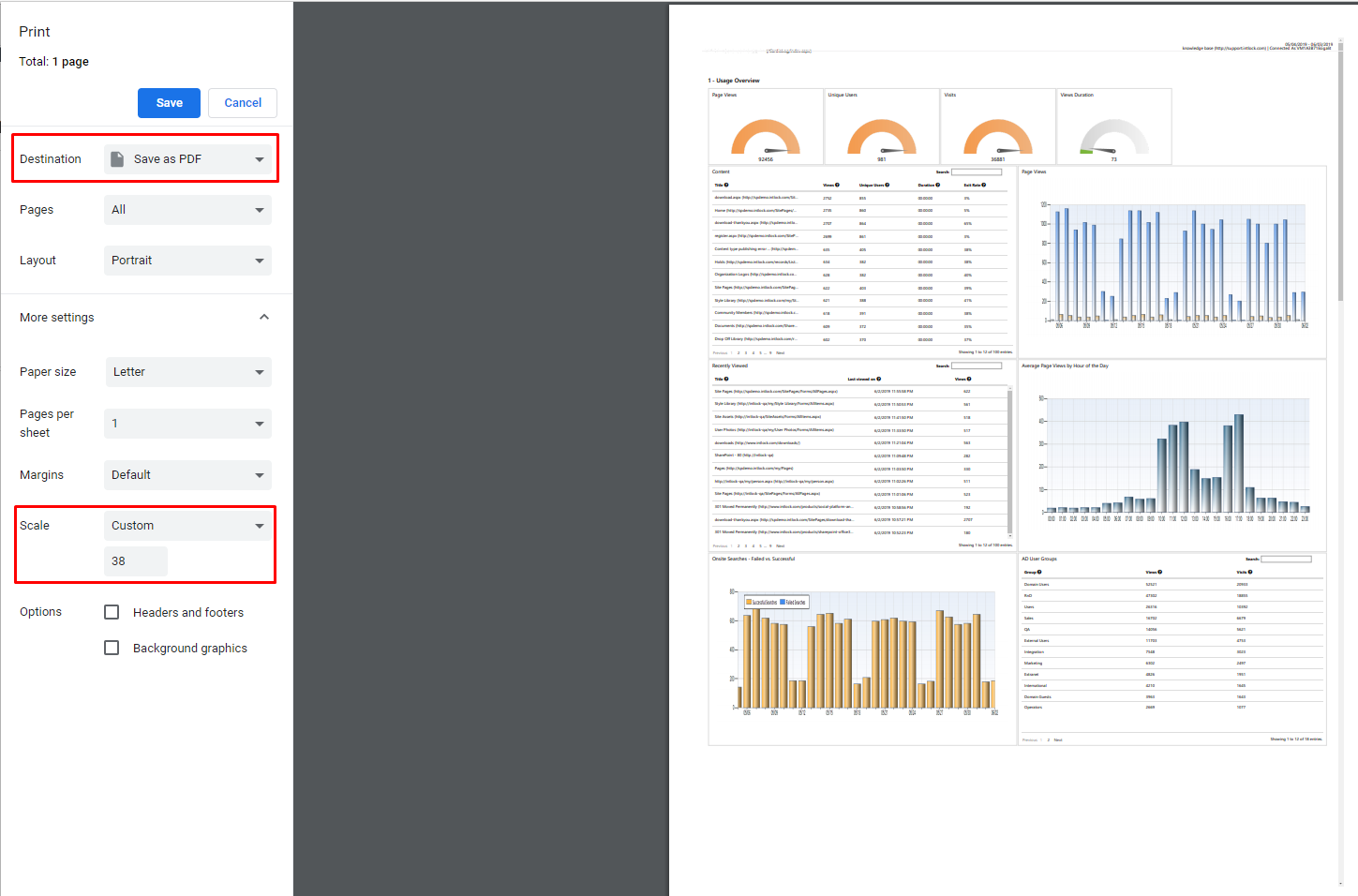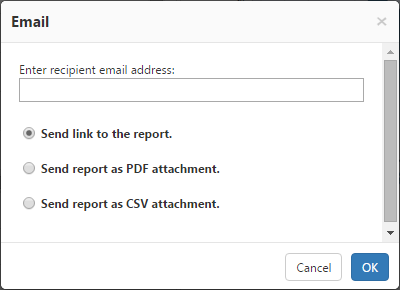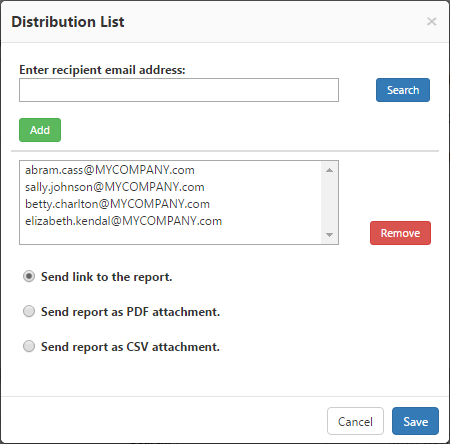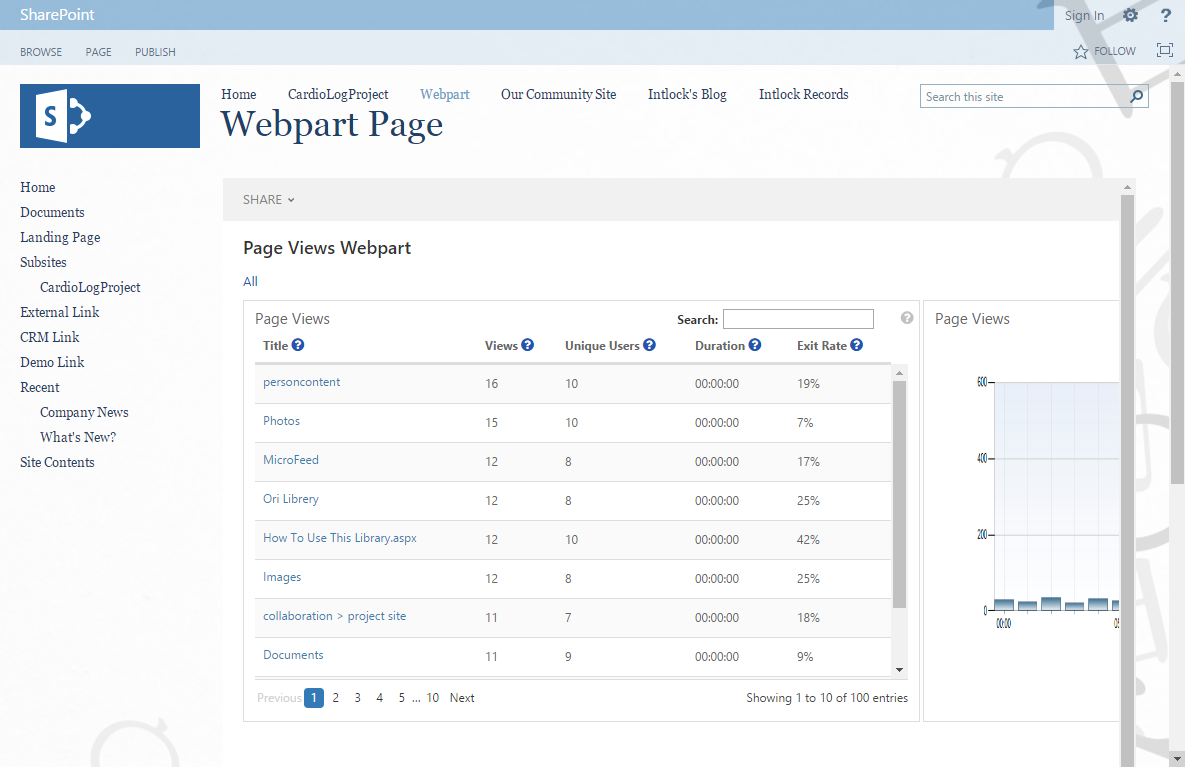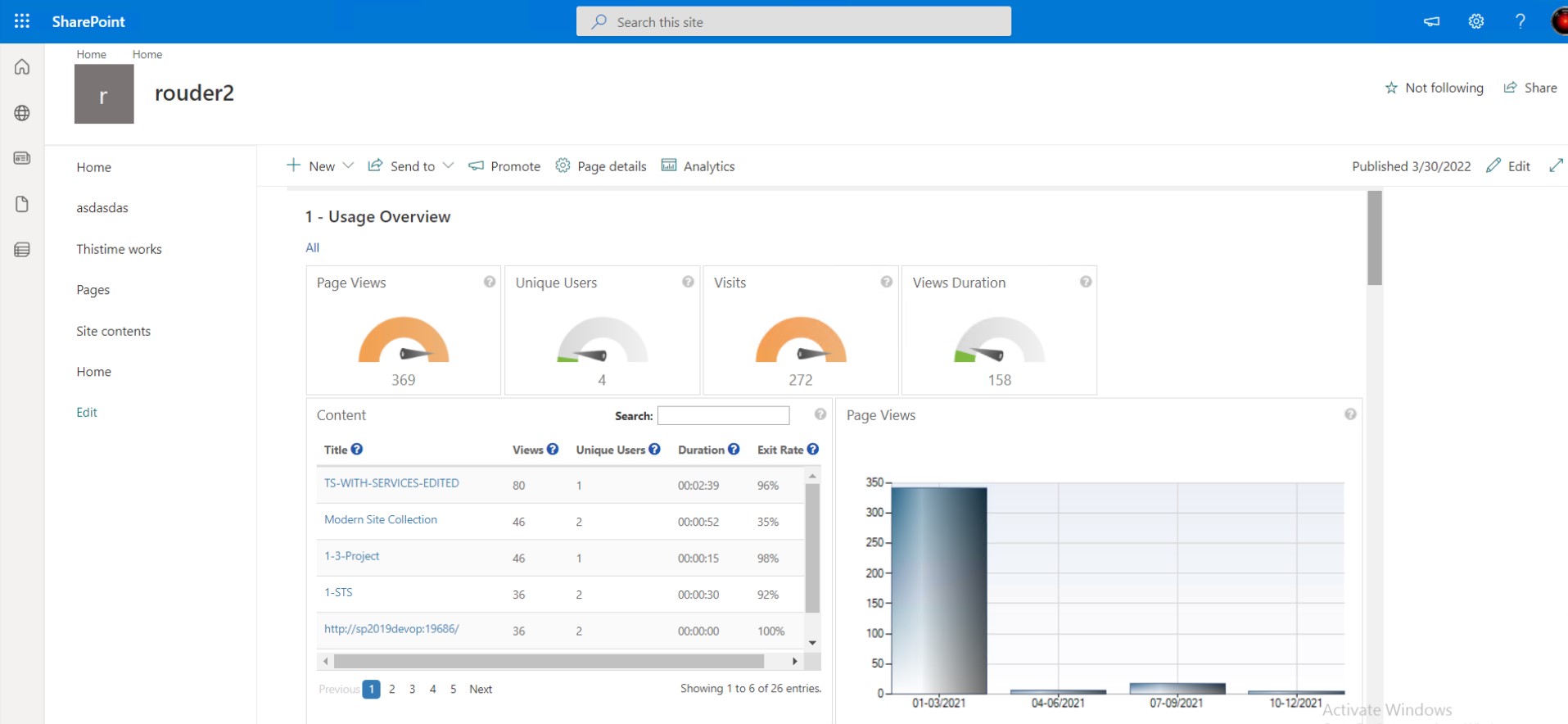Page History
Use the Report Center to gain a fresh insight into your website with a wide range of usage reports and dashboards. In the Report Center, you can easily create dynamic reports that feature charts and tables, either by making use of one of CardioLog's existing templates, or by building a report from scratch. You can schedule reports to run automatically at any interval you like, and you can set permissions for who can view and edit each report to ensure that the right people have access to the right data. It's also possible to export a report in several standard formats including SharePoint web parts and CSV, and to email reports to distribution lists or individual colleagues.
Contents
- How to Create a Report
- How to Edit a Report
- How to Copy a Report
- How to Create a Report based on a Template
- How to Set Permissions for a Report
- How to Export a Report to Excel
- How to Export a Report to PDF
- How to Export a Report as a Microsoft SharePoint Web Part
- How to Send a Report via Email
- How to Set an Email Distribution List for a Scheduled Report
- How to View a Report from SharePoint's Site Actions Menu
| Table of Contents | ||
|---|---|---|
|
Anchor create new create new
How to Create a Report
| create new | |
| create new |
...
- Find the report you would like to edit in the Navigation Pane, click it, and then select Edit from the contextual menu.
Report Contextual Menu - The report will now open in Edit Mode. When a report is in Edit Mode, you can add Widgets to it, change the time range, edit filters and export a CSV file for use with Excel and other spreadsheet applications.
- You can click any blank area of the report where a plus sign appears as you hover your cursor, or click Add at the top of the Central Area Toolbar and select a widget to add to the report. Continue on to widget editing for more information. The Reports Gallery contains a full description of all widgets.
Blank Report Edit Toolbar
The following actions are available in the Top Toolbar while in Edit Mode or Static Mode:Anchor top toolbar top toolbar - Add - add widgets to the report.
- Actions Menu
- Remove All Widgets - Clears all widgets from the current report.
- Refresh - refresh the report's settings.
- Generate Report - create the report in real time.
Actions menu - Remove All Widgets - Clears all widgets from the current report.
- Share Menu
- Export to CSV - Export the data to Microsoft Excel or other spreadsheet applications.
- Distribution List - Send the report to a distribution list.
Share menu
The Filters menu allows you to limit the data displayed to specific pages, users or groups, or visitor segments for all widgets simultaneously. Alternatively, you may edit each widget's filter preferences individually to suit your needs.
Filters menu - Export to CSV - Export the data to Microsoft Excel or other spreadsheet applications.
- After designing the report, you can create a static version with real time data (by selecting Generate Report), or wait until the report is automatically generated at the next scheduled interval. As long as there are no static versions for the report, it will be displayed in Edit Mode when selected from the Navigation Pane, assuming the current user has sufficient permissions. Otherwise, the latest static version will be displayed.
A Static Report with Active Widgets - Edit the time frame for a static report by clicking the current Time Range menu on the top right of the report. Select the desired date range, or customize to highlight a specific period of time.
Choose Date Range Menu
Customized Date Range - To remove the report, including all previous versions click the report title in the Navigation Pane and select Delete. To remove only the previous versions of the report and associated data, select Delete Historical Data. The report's Historical Data refers to all prior report versions that have been saved. If a version exists for a selected date range, the original saved version is displayed, and no query is submitted to the database. This is in order to save system resources and streamline report generation.
- Select Properties in report's contextual menu in the Navigation Pane to modify the report information. There are six property fields and the first three listed here may be edited at any time:
- Name: The name of the report as it appears in the Navigation Pane and all further saved versions.
- Description: An optional description of what the report contains, or notes.
- Scheduling: You may change between scheduled or Ad-Hoc report generation at any time. If a new report schedule is chosen, the report will be refreshed at the next relevant scheduled interval, not immediately.
- Created By: The username of the person who originally created the report
- Create Date: The date and time the report was originally created
- Last Access Date: The most recent time and date that the report was opened or viewed in CardioLog.
Report Properties
- Select Permissions to edit who may view, edit or modify the report as described below.
- Select Browse in the report's contextual menu in the Navigation Pane to view the report isolated in a new window, without the CardioLog scheme. Browse is only available after at least one report has been generated.
| Anchor | ||||
|---|---|---|---|---|
|
Once a report exists in your CardioLog Report Center, you may continue to edit it whenever you see fit without affecting data collection or previous report data. The latest version of CardioLog allows you to easily drag and drop widgets within a report. expand and shrink charts, tables and maps, and simply click to add new widgets exactly where you would like them in a report. Visualizing your data is dynamic and intuitive.
- To add a new widget, click any blank area of the report where a plus sign appears as you hover your cursor over the central area, or click Add at the top of the Central Area Toolbar and select a widget category.
Add Widget Dialogue - Click the category type you'd like and you'll be presented with a list of all available widgets in the category. Click on the icon of the available widget type you'd like: map, chart, meter or table. The new widget will now appear in your report. To add more widgets, repeat these two steps.
Page Views Widget Category - Once a widget is available in your report, you can edit all filters and time ranges for each widget separetely from the whole report as long as the report is in Edit mode.
- Click on the title of a widget to move the whole widget to any part of the report's display, and to rearrange the presentation of the report.
- You can click on the right-side or bottom border of any chart, table or map widget to resize it to a comfortable view. This is especially helpful for charts and tables depending on the type and amount of information presented.
- In addition to full report export options described further below, you can also export individual widget data to a CSV file. Simply click on the setting gear in the upper right corner of any widget and select Export to CSV. A CSV will be downloaded to your browser's default download location.
| Anchor | ||||
|---|---|---|---|---|
|
The amount of resources needed for report processing depends on the number of scheduled reports, the number of database queries for each report and the timeframe selected for the reports (reports for 365 days require more resources then reports for 30 days). To ensure optimal operation, make sure you follow these recommendations:
...
You can set view, edit (Edit Mode), modify (properties and permissions) and remove (permissionsdelete) for a specific report for any user or group in Active Directory. By default, the report creator has full control permissions, while view permissions are given to everyone. Additionally, Users and groups can be added, and deleted. Members who have been granted access can also modify existing permissions.
...
You can export a report from the Report Center to PDF format for printing. The report must be in View Mode. Click Generate Report from the Actions menu if a Static Report does not exist yet.
- When the report is in View Mode, click you will have 3 options to Export to PDF from the Share menu.
Share menu in View mode- Export to PDF (A4) - the report will be saved as a PDF file with page size A4.
- Export to PDF (Letter) - the report will be saved as a PDF file with page size Letter.
- Export to PDF (As is) - the report will be saved as a PDF file with a custom page size (report dashboard size).
- When selecting Export to PDF (A4) or Export to PDF (Letter), you will be able to select the page orientation - Portrait or Landscape.
- The report will be downloaded to your default downloads location.
You can also control the report layout by printing the report and saving it as PDF:
- On the Navigation pane, under Report Center, click the report from the Reports tree and select Browse. If the Browse option is grayed out, select Open and click Generate Report from the Actions menu, to generate a static report.
- In the new report window, open the browser settings menu and select Print.
- In the Print Preview window, open the advanced settings and edit the scale options in order to shrink the report layout to fit the page.
- Choose Save as PDF in the printer destination.
Example - Print settings in Chrome
Anchor send email send email
How to Send a Report via Email
| send email | |
| send email |
- When the report is in View Mode, click Send To from the Share menu.
- In the new email window, enter an email address
- Choose how you would like your recipient to view the report and click OK.
Send Email window
| Anchor | ||||
|---|---|---|---|---|
|
Once a new non ad-hoc report is created, an automated email can be sent to a predefined distribution list. This email includes a unique link, a PDF file or CSV file attachment with the most recent report data. The email may be sent to the distribution list monthly, weekly or daily, according to the report's scheduling preference.
- Open a report in View Mode and select Distribution List from the SHARE menu.
- Enter an email address in the text box and click the Add button to add the address to the distribution list.
- Add any additional email addresses you would like to include.
- Click Save.
Distribution List Dialogue
| Anchor | ||||
|---|---|---|---|---|
|
- Confirm the report is in View Mode.
- Click Generate Report from the Actions menu if at least one Static Report does not exist yet. Click Create Web Part from the Share menu.
In the Create Web Part window, choose if you would like to embed the web part in a SharePoint classic page or a SharePoint modern page.
Create Web Part DialogueWhen selecting Create web part for SharePoint classic pages and clicking OK, the report will be downloaded as a DWP file to your browser's default downloads location.
You can
then add the dynamic Dashboard Web Part to your SharePoint classic web site.
CardioLog report web part displayed on a classic SharePoint site
- When selecting Create web part for SharePoint modern pages and clicking OK, the web part code will be copied to clipboard. You can then embed the web part code in your SharePoint modern pages using the Embed option. Please note that only secure content can be embedded; therefore the CardioLog web application must be configured with SSL (see instructions under How can I configure secure access to the CardioLog website with HTTPS? in this guide for more details).
CardioLog report web part displayed on a modern SharePoint site
| Anchor | ||||
|---|---|---|---|---|
|
- The CardioLog system administrator must first create and publish report templates. These templates will then be available from all SharePoint portal pages.
- Once logged into the SharePoint portal, click the Site Actions settings gear to access the page options, By default, the logged in user requires SharePoint view permissions to see the report.
- Click Site Statistics to generate a usage report for your page. The report will open in a new browser tab or window depending on your local preferences.
- Select the desired report template and date range in order to run a relevant usage report for the page you are visiting.
CardioLog Site Statistics SharePoint Menu Item
